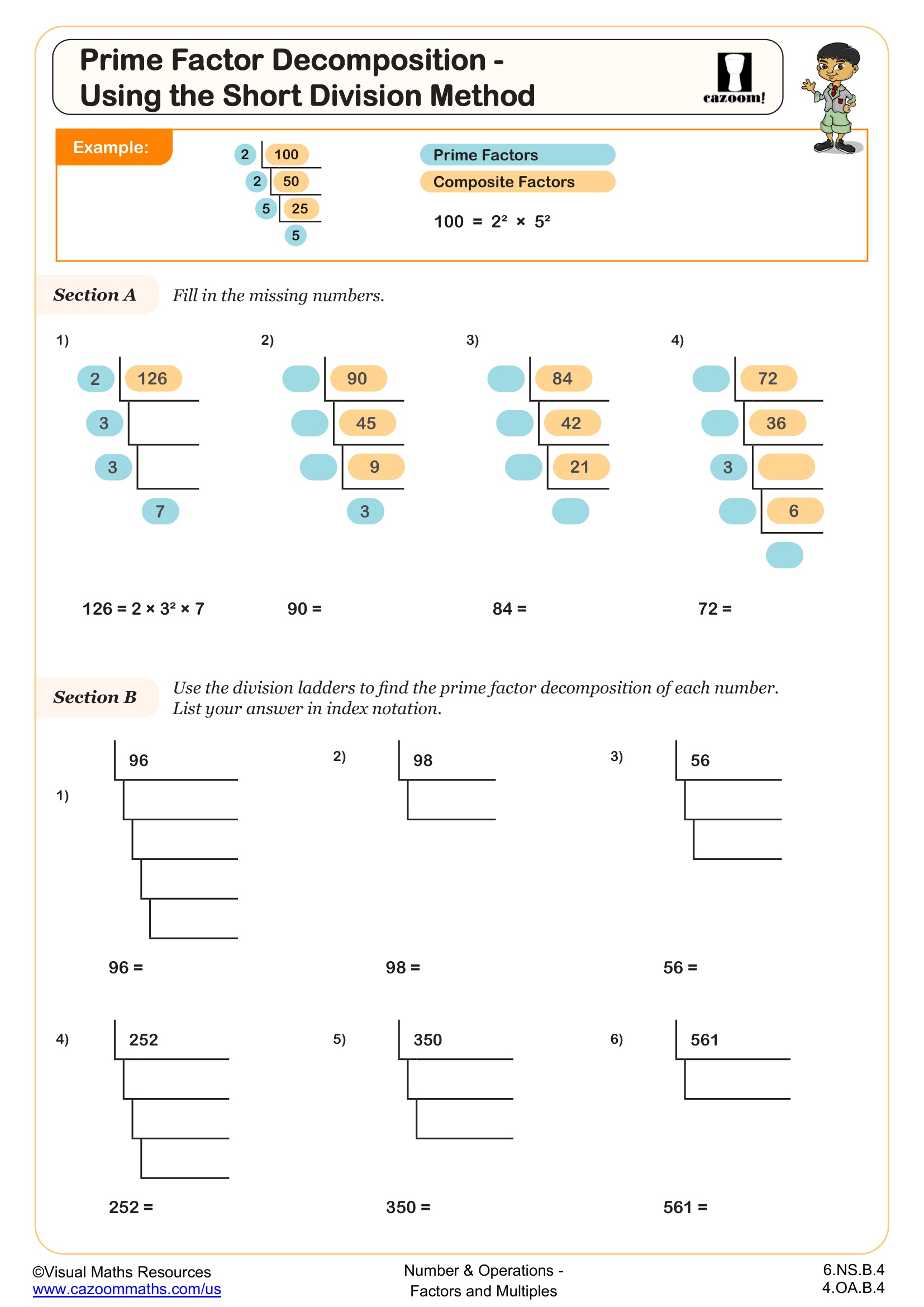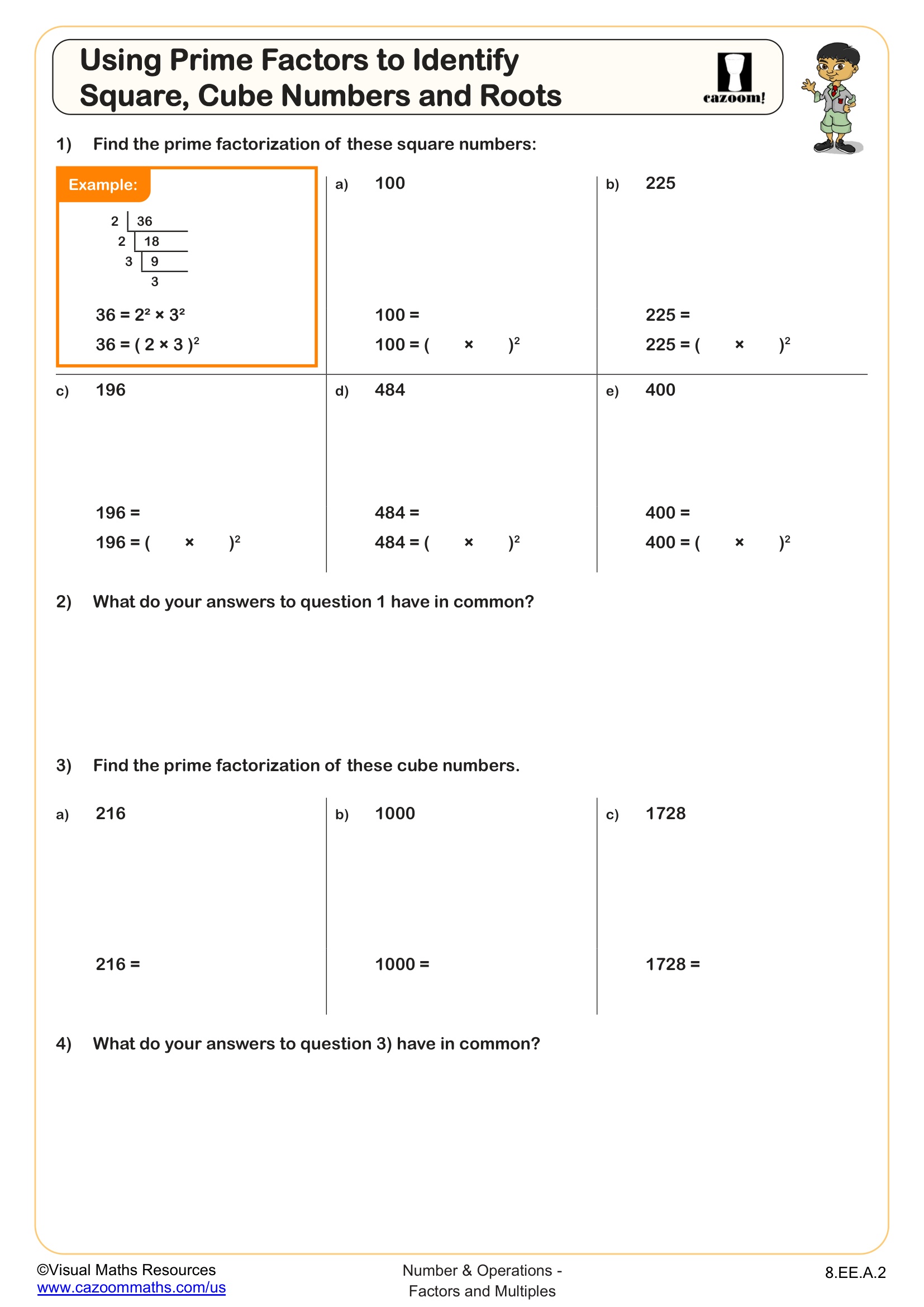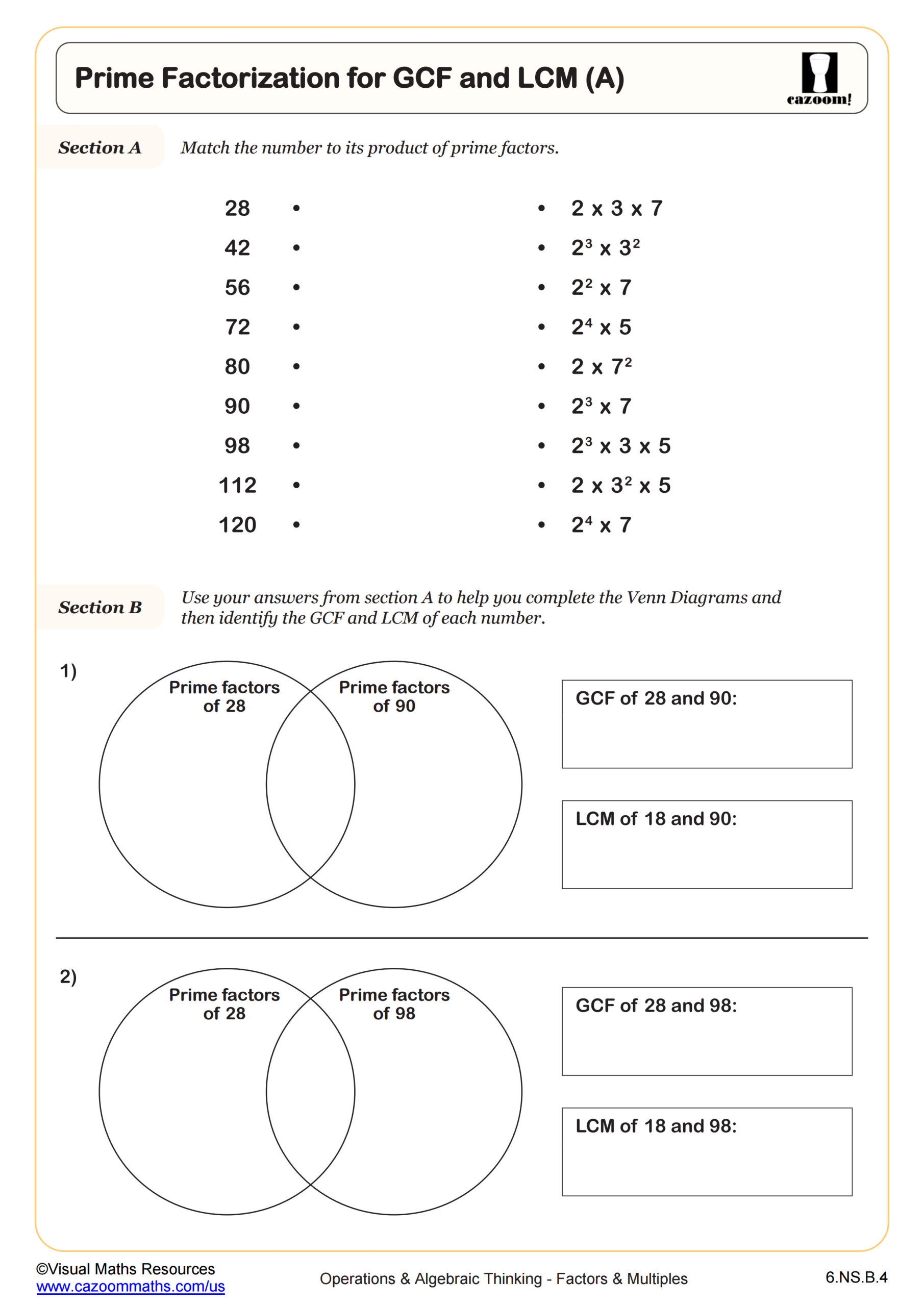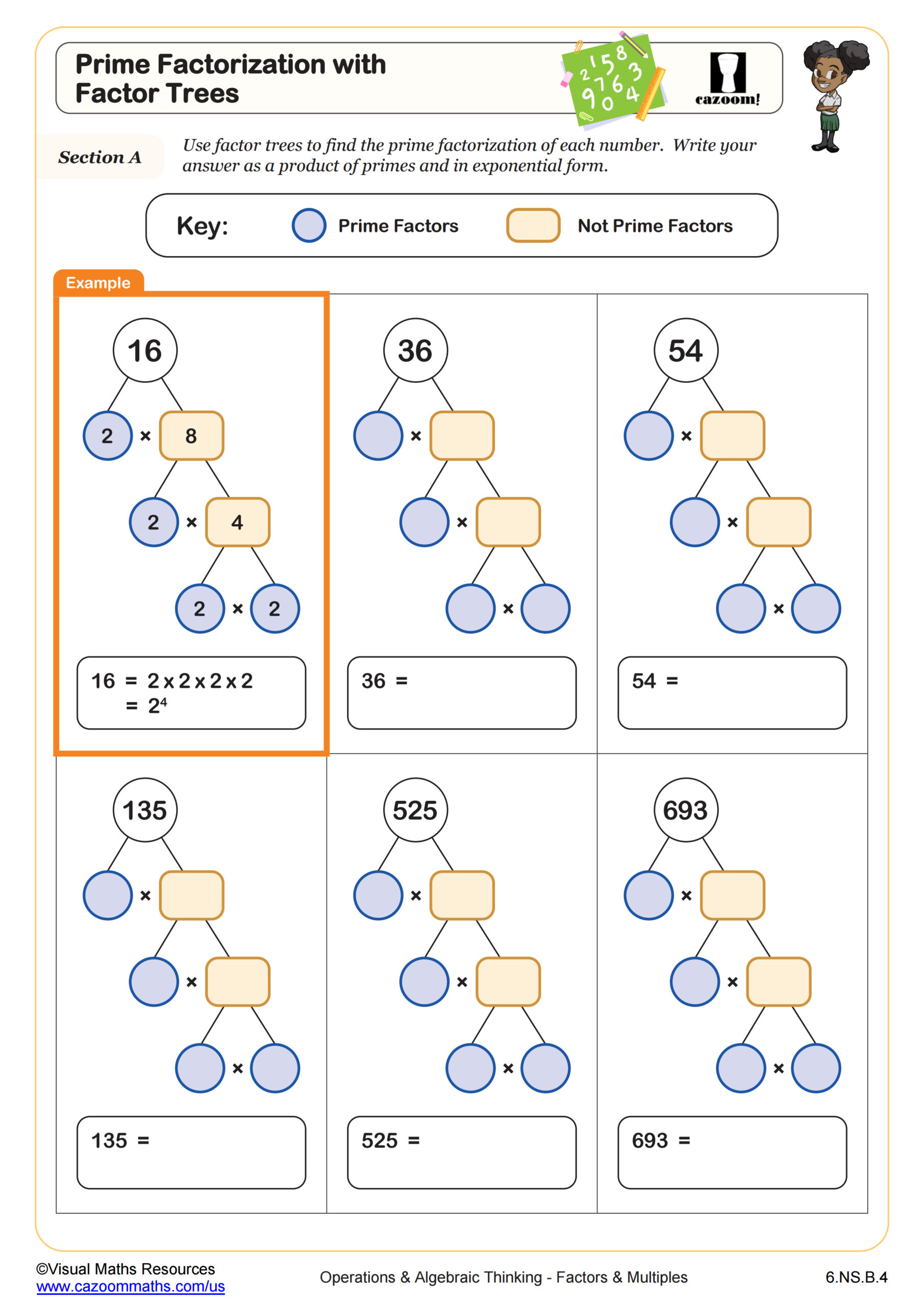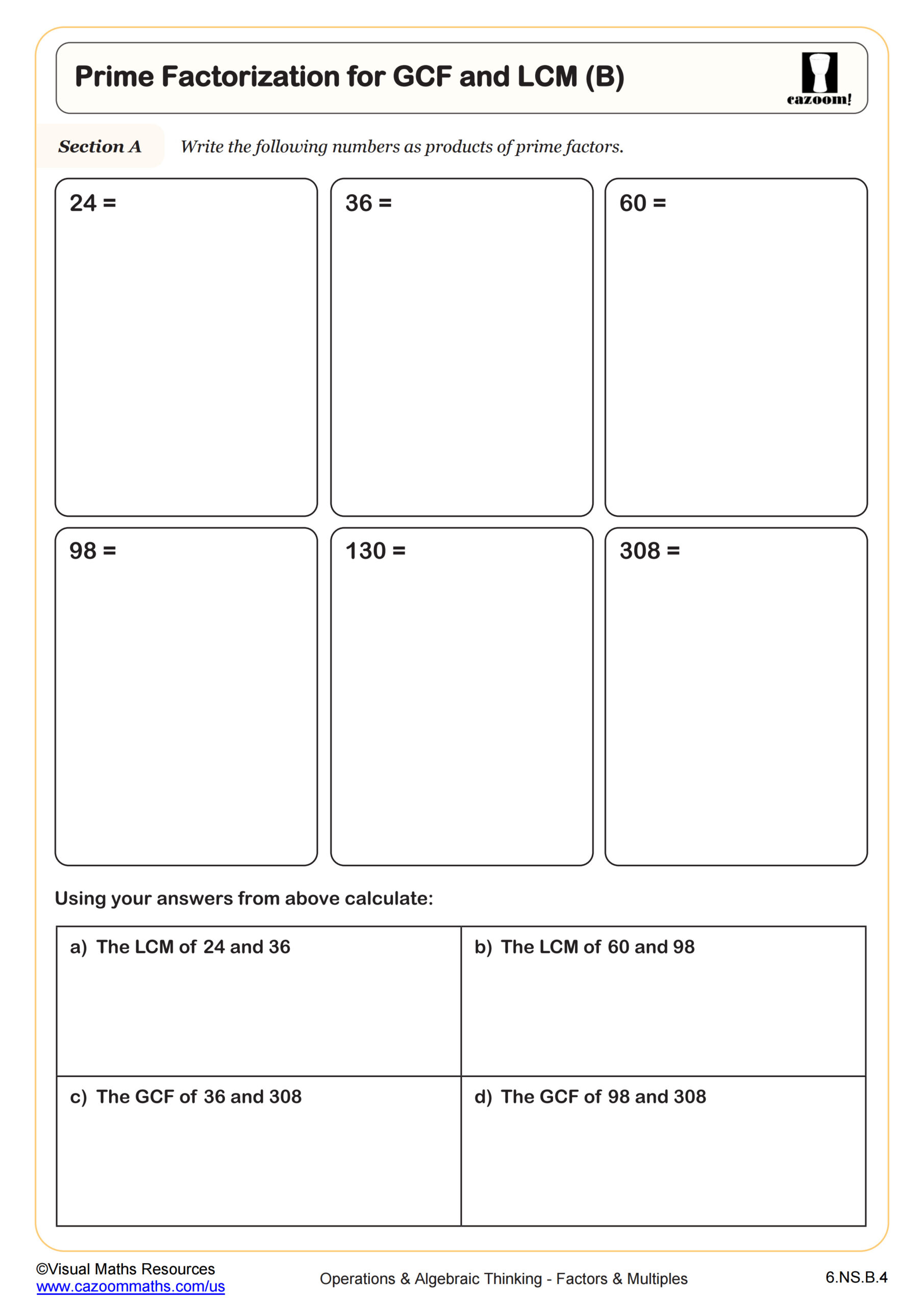Prime Factor Decomposition - Using the Short Division Method WORKSHEET
Find the greatest common factor of two whole numbers less than or equal to 100 and the least common multiple of two whole numbers less than or equal to 12. Use the distributive property to express a sum of two whole numbers 1–100 with a common factor as a multiple of a sum of two whole numbers with no common factor. For example, express 36 + 8 as 4 (9 + 2).
Prime Factor Decomposition - Using the Short Division Method WORKSHEET DESCRIPTION
Using this short division (or ladder) method provides a clear step by step approach to prime factorisation. This method pays off in the long run as finding the LCM or HCF of two or even three composite numbers becomes easier and more intuitive!
The worksheet begins with an example of the method which is followed by a fill in the blanks task, aiming to build learners confidence.
In section B, students will find the prime factor decomposition of six numbers. Here the ‘ladders’ are pre drawn to further support your students.
Next up, learners will explain what’s wrong with three different product of prime factors answers.
There are nine further numbers to decompose in section D. There is no scaffolding in place here.
Lastly students are introduced to using the methods with two numbers in section E. This is used to find the LCM and HCF of the pairs of numbers.
